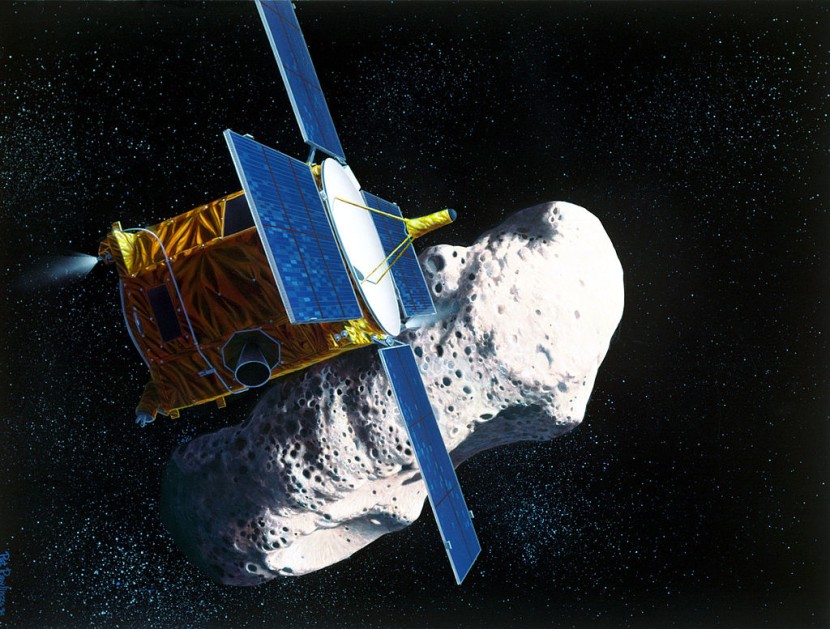
Three near-Earth asteroids that were hiding out in the sun's glare were discovered by astronomers. The greatest potentially dangerous object that poses a risk to Earth in the last eight years was revealed to be one of the asteroids.
The asteroids are part of a class that may be discovered near the orbits of Earth and Venus, but since the sun's brightness blocks telescope observations of them, it is very challenging to observe them.
Astronomers Spot Possibly Dangerous 'Planet Killer' Asteroid
Astronomers jumped at the chance to carry out their observations during the brief window of twilight in order to avoid the sun's glare. Using the Dark Energy Camera on the Victor M. Blanco 4-meter Telescope at the Cerro Tololo Inter-American Observatory in Chile, a global team discovered the space rocks.
Their research was released in The Astronomical Journal on Monday. It is impossible for the scientists to predict when one of the asteroids, 2022 AP7, which is 1.5 kilometers (0.9 miles) wide and has an orbit that might put it into Earth's path in the future.
Since it takes an asteroid five years to complete an orbit around the sun, scientists have discovered that the asteroid crosses Earth's orbit, but it does so while Earth is on the other side of the sun. This pattern will persist for generations, as per CNN.
After the asteroid was discovered in January, other observatories monitored its movement, and other astronomers eventually identified it in earlier images. It is quite clear from this data that it will not be stopping by Earth anytime soon, and maybe not even for a very long time.
There is a very slim chance of an impact in the near future, said Tracy Becker, a planetary scientist from the Southwest Research Institute who was not involved in the study.
Will 'Planet Killer' Asteroid Hit The Earth?
Today, astronomers concentrate on identifying rocks that are 460 feet wide while searching for potentially dangerous asteroids, which are rocks that travel at least as near to Earth as 4.6 million miles and are too big to be burnt without incident by our atmosphere.
Fewer than half of them-of which there are most likely tens of thousands-have been recognized. They are capable of causing damage on a large basis.
The development of planetary defense missions like DART, the spacecraft that successfully changed the orbit of a minor, non-threatening asteroid in September, was spurred on by such dangers, which are what NASA and other space agencies are working to combat.
Most asteroids two-thirds of a mile long and bigger, which are far less frequent but are capable of wreaking havoc on the entire planet, have previously been discovered. But according to Dr. Fitzsimmons, "we know some are still out there to find."
There are undoubtedly several that lurk close to Mercury and Venus. But according to Dr. Thomas, "finding objects inside Earth's orbit with our existing discovery telescopes is exceedingly challenging." The sun obscures Earth's telescopes for the most of the day, and the few minutes just before twilight are the only times when objects may be searched for.
The Dark Energy Camera on the Victor M. Blanco 4-meter Telescope in Chile was used by the researchers who discovered 2022 AP7 to get around this restriction. It is sensitive enough to locate weak objects that are completely covered in sunlight in addition to being able to explore wide areas of the sky.
The camera has so far discovered two other near-Earth objects: a larger, country-killer-sized rock that presents no threat, and a planet-killer in size that has an orbit that never crosses that of Earth but brings it closer to the sun than any other known asteroid.
The Near-Earth Object Surveyor mission from NASA will ultimately surpass the twilight survey's capabilities. This Earth-orbiting infrared observatory will be launched later this decade and will look directly into the sun's glare, finding most of the dangerous asteroids that earlier surveys have missed, as per NY Times.
Related Article : Meteors of Halloween: Watch Out for This Meteor Shower That You Won't See Again Until 2032
@YouTube
© 2025 HNGN, All rights reserved. Do not reproduce without permission.








